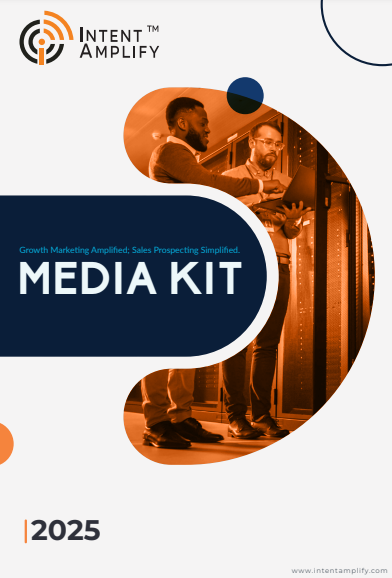
The Difference Between Event Advertising and Event Marketing
- Last updated on: October 22, 2025
Events are still at the core of demand generation, brand building, and pipeline acceleration in the fast-changing B2B world. No matter if you are holding a main conference, a local workshop, or a virtual summit of thought leadership, success is mainly based on two layers: event advertising and event marketing.
Marketers are too often mixing these terms and treating them as the same thing, but by doing so, they miss opportunities, limit their reach, and weaken their impact. At Intent Amplify®, we consider separating these two roles as a turning point for large teams to go beyond “just an event” and convert their gatherings into measurable growth engines.
This article will:
- Describe event advertising and event marketing in the B2B context.
- Illustrate how internally each function holds a different role in your event strategy.
- Explain the synergies they create when working together to drive pipeline, brand lift, and engagement.
- Offer actionable tips to be efficient in both functions for global campaigns (North America, EMEA, APAC).
What is Event Advertising?
Event advertising is the practice of getting your event in front of the right people, resulting in registration and attendance. This is the outward-facing push that is intended to generate visibility, interest, and physical or virtual footfall.
In a B2B environment, event advertising could be:
- Paid search campaigns targeting decision-makers in specific industries or regions.
- LinkedIn or account-targeted display ads directed at the ideal buyer persona.
- Trade publication or industry-specific newsletter sponsorship content.
- Email blasts, retargeting, and outbound outreach to segmented prospect lists.
- Social media promotion (mainly for awareness on LinkedIn, Twitter, or other channels that your audience uses).
The main features of event advertising are:
- Short-term, campaign-driven: It begins when you announce the event and runs up to (and sometimes during) the event.
- Visibility-centred: Primarily focused on making your target audience aware that the event exists and compelling them to take action (register, save the date).
- Lead-driving: The goal is to populate your attendee list — ideally with qualified contacts that feed into demand generation pipelines.
- Measurement-oriented: Metrics typically include impressions, click-through rate (CTR), registrations, cost-per-registration, and early engagement (e.g., session sign-ups, interest).
For enterprise marketers operating in multiple regions (North America, EMEA, APAC), the advertising function must tailor messaging, creative, and channel mix to each geography. Time zones, cultural nuance, and region-specific platforms all affect effective execution.
What is Event Marketing?
While advertising drives awareness and gets people in the door, event marketing is the broader strategic process that encompasses the entire lifecycle of the event from ideation through follow-up, to generate meaningful business outcomes beyond attendance.
In B2B terms, event marketing activities might include:
- Defining the event theme, positioning it within your content strategy, and aligning it to key buyer journeys.
- Creating omnichannel campaigns (email, content syndication, social, webinars) that build interest and nurture attendees.
- Crafting rich content experiences: keynote sessions, breakout tracks, VIP roundtables, networking opportunities, digital engagement components.
- Personalising the attendee journey before, during, and after the event: segmenting by role, industry, or region, and delivering tailored content accordingly.
- Integrating with account-based marketing (ABM): using the event as a touchpoint for target accounts, mapping attendee behaviour to specific pipeline-contributing opportunities.
- Post-event follow-up: lead-nurture flows, on-demand content access, meeting bookings, pipeline creation, ROI measurement, and insights.
- Aligning event outcomes with broader demand-generation goals: how did the event contribute to MQLs, SQLs, pipeline, revenue, and brand lift?
Key characteristics of event marketing:
- End-to-end and strategic: Not just promoting the event, but orchestrating the full experience and business integration.
- Engagement-centred: Focused on making connections, driving behaviour, building relationships, and moving leads toward conversion.
- Business-outcome-driven: The measures go beyond registration numbers to real pipeline contribution, deal progression, and brand impact.
- Data-informed: Marketing insights drive segmentation, personalisation, campaign optimisation, and future planning.
For global marketing teams, event marketing must consider region-specific buyer behaviours, language preferences, content formats (e.g., localised webinars or in-person events) and time-zone-sensitive follow-up flows.
Why the Distinction Matters?
When organisations blur the lines between event advertising and event marketing, they risk three major pitfalls: Many teams already feel the pressure – according to Forrester Research’s Q1 2025 survey, overall event satisfaction dropped 8% year-over-year as teams struggled to adapt. The reason? Marketers are running more events than ever, but without a clear strategy connecting promotion and engagement, results are falling short.
- Low conversion from volume to value
You may register hundreds of attendees, but if they don’t engage or convert to pipeline, your event becomes a cost centre rather than a growth accelerator. Without strong event marketing to nurture and follow up, advertising alone won’t move the needle.
- Operational inefficiency and silos
If advertising is handled by one team and marketing by another with little coordination, you lose alignment on messaging, audience targeting, data capture and post-event conversion. That fragmentation reduces brand consistency and weakens measurement.
- Poor global reach and localisation
A campaign designed without a region-specific marketing strategy often falls flat. A North America-centric advertising push may miss the mark in EMEA time zones, and without marketing follow-up localised to APAC market nuances, engagement stalls.
Distinguishing the functions allows you to optimise each phase – advertising for reach and registrations, marketing for engagement, conversion, and pipeline. This holistic view ensures your events drive real business outcomes, not just eyeballs.
How Event Advertising and Event Marketing Work Together
Consider your next enterprise event as a funnel, with event advertising at the top and event marketing guiding attendees through the funnel to business impact. Here’s how they intersect in practical terms:
- Registration process: Advertising drives traffic to the registration page. Marketing ensures the page and follow-up workflows reflect your brand, capture rich data and set the stage for engagement.
- Audience segmentation: Advertising delivers audience reach (e.g., Finance VPs in APAC, IT decision-makers in EMEA). Marketing uses that data to segment registrants and tailor experiences (e.g., pre-event briefings, VIP invites, personalised content).
- Content and messaging alignment: Advertising delivers the core invite and promotional messaging. Marketing ensures that the event’s theme, content, sessions, and post-event communications tie back to buyer challenges and your value proposition.
- Lead-capture and nurturing: Advertising may capture raw registrations, but marketing orchestrates the nurture flows, meeting bookings, account-based follow-up, and post-event content access that drives the pipeline.
- Measurement and optimisation: Advertising tracks registration metrics and cost-per-lead. Marketing tracks engagement metrics, lead quality, pipeline conversion, and ROI. Together, data feeds back to refine future campaigns.
- Regional coordination: Advertising campaigns may target different geographies with location-specific creatives. Marketing ensures the regional event experience (e.g., local language webinars, regional breakout tracks, timezone-appropriate live sessions) is coherent and effective.
Practical Steps to Maximise Event Impact
Here are best-practice steps for enterprise marketers, across regions, to leverage both event advertising and event marketing effectively:
1. Define clear objectives
Begin with specific business outcomes: number of MQLs, target accounts to engage, pipeline value, brand awareness lift in EMEA/APAC. Then map how both advertising and marketing will contribute.
2. Build your audience strategy
Use buyer personas, firmographic/technographic data, and intent signals to define who you want to reach. For advertising, select channels and geographies. For marketing, design segmentation, nurture flows, and follow-up strategies.
3. Craft your positioning and messaging
Ensure consistency across advertising and marketing. The event theme, tagline, and value proposition must speak to your target buyers. Localise messaging for EMEA and APAC contexts (time zones, cultural references, business challenges).
4. Design parallel flows
Advertising: campaign setup, creatives, channels, budget, tracking.
Marketing: content assets, email nurture, webinar/tracks, VIP outreach, post-event follow-up. Ensure both flows are aligned and integrated.
5. Set up technology and data infrastructure
Implement registration platform, marketing automation, CRM, and analytics. Ensure data flows from registration (advertising output) into nurture, scoring, and pipeline tracking (marketing output). This integration is vital for measurement and optimisation.
6. Execute in unison
Launch advertising in tandem with marketing outreach. Monitor registrations, segment immediately, and deliver pre-event engagement content. On-site or virtual event: ensure seamless attendee experience and alignment of brand/admin operations.
7. Post-event conversion and measurement
Immediately follow up with attendees and non-attendees. Deliver on-demand content, schedule meetings, and nurture to the next stage. Measure both immediate and longer-term metrics: attendee engagement, follow-up meeting rate, pipeline influenced, revenue generated, and regional performance.
8. Review and iterate globally
Analyse data across regions — which geographies performed best? Which audiences engaged or converted? Feed insights into next event’s advertising targeting and marketing content strategy for continuous improvement.
Region-Specific Considerations (North America, EMEA, APAC)
To succeed across global markets, you must tailor your approach in both advertising and marketing. Here are key considerations:
- Time zones and timing: In APAC, schedule live sessions at times that work regionally; your advertising and marketing messaging needs to respect local business hours. In EMEA, avoid North America-centric calendars.
- Cultural and language adaptation: Region-specific language, idioms, and imagery matter. Adapt creatives and email content accordingly. For example, a UK audience may respond better to a formal tone than a Silicon Valley tech audience.
- Channel preferences: In North America, LinkedIn + display ads may prevail. In EMEA/APAC, explore region-specific platforms, localised social media (e.g., WeChat in China, LINE in Japan, regional trade media).
- Regulatory and privacy compliance: GDPR in Europe, privacy laws in APAC require specific consent workflows. Make sure your advertising and registration systems comply. Marketing follow-up must respect local rules.
- Content relevance: Business challenges differ by region. A fintech event in APAC may focus on digital payments, whereas in North America, the focus may be on interoperability or regulation. Tailor session tracks accordingly.
- Post-event follow-up cadence: Cultural preferences affect how and when people expect follow-up. For some regions, shorter response windows are standard. Marketing automation flows must adapt.
Common Pitfalls and How to Avoid Them
Pitfall 1: Focusing solely on registrations.
Many teams treat “number of attendees” as success. But without engagement and follow-up, registrations don’t equate to pipeline. Avoid this by aligning event metrics to business outcomes, not just volume.
Pitfall 2: Advertising and marketing in silos.
When teams operate independently, messaging, data flow and measurement suffer. Promote collaboration: set joint KPIs, share dashboards and ensure holistic ownership of the event funnel.
Pitfall 3: Under-estimating tech and data integration.
If your registration platform doesn’t feed into your marketing automation and CRM, you’ll miss out on segmentation, nurture efficiency and measurement. Ensure platforms integrate, data is unified and flows are automated.
Pitfall 4: Lack of regional adaptation.
Running a one-size-fits-all campaign across global markets rarely works. Customise creatives, channel selection and content for each region. Use local experts to validate localisation.
Pitfall 5: No post-event strategy.
The event doesn’t end when the last session ends. Without structured follow-up, your attendees drift. Implement clear post-event workflows, account follow-up, on-demand content and measurement.
Metrics that Matter
Here’s how to think about measurement across advertising and marketing:For event advertising:
- Impressions, Click-through rate (CTR)
- Cost-per‐registration
- Registration conversion rate (from click to registration)
- Audience reach and penetration (e.g., target accounts, industry segments)
For event marketing:
- Attendance rate (from registration to actual attendance)
- Session participation and engagement (poll responses, chat activity, networking)
- Meeting requests/bookings during or after the event
- Post-event content downloads/views
- Lead progression: MQLs → SQLs → pipeline influenced → revenue generated
- Regional performance breakdowns (North America vs EMEA vs APAC)
By combining these metrics, you get a full picture: how many you reached, how many you engaged, and how many you converted. That’s the path to measurable growth.
Final Thoughts
In a competitive B2B environment, events are no longer just brand-building exercises or once-a-year spectacles. They are strategic tools in your global demand-generation arsenal. But to extract maximum value, you must treat event advertising and event marketing as distinct yet deeply complementary disciplines.
Think of event advertising as the engine that drives inbound volume. Think of event marketing as the gearbox that channels that volume into outcome-driving results. When both are optimised and aligned, you transform an event from a moment in time into a pipeline-fueling, brand-amplifying machine.
FAQs
1. What is the main difference between event advertising and event marketing?
Event advertising focuses on promoting an event to drive registrations and attendance. Event marketing, however, covers the entire lifecycle from planning and engagement to post-event follow-ups turning attendees into qualified leads and customers.
2. Why is it important to separate event advertising from event marketing?
When both are treated as the same, campaigns lack structure. Advertising brings awareness, but without marketing’s strategic follow-up, you lose momentum and ROI. Clear separation ensures each phase – awareness, engagement, conversion – works together seamlessly.
3. How can B2B marketers integrate event advertising and marketing effectively?
Start by aligning both teams on audience goals and KPIs. Use advertising to attract qualified registrants, then activate event marketing with tailored content, account-based outreach, and post-event nurturing to turn engagement into pipeline.
4. What metrics should companies track to measure event success?
Event advertising metrics include impressions, click-throughs, and registrations. Event marketing goes deeper – tracking attendance, engagement, lead quality, pipeline contribution, and revenue influenced. Together, they provide a complete ROI picture.
5. What role does technology play in event advertising and marketing?
Tech integration is essential. Linking your CRM, marketing automation, and event platform ensures seamless data flow from registration to post-event nurture. It also enables personalization, real-time reporting, and better decision-making across global teams.




